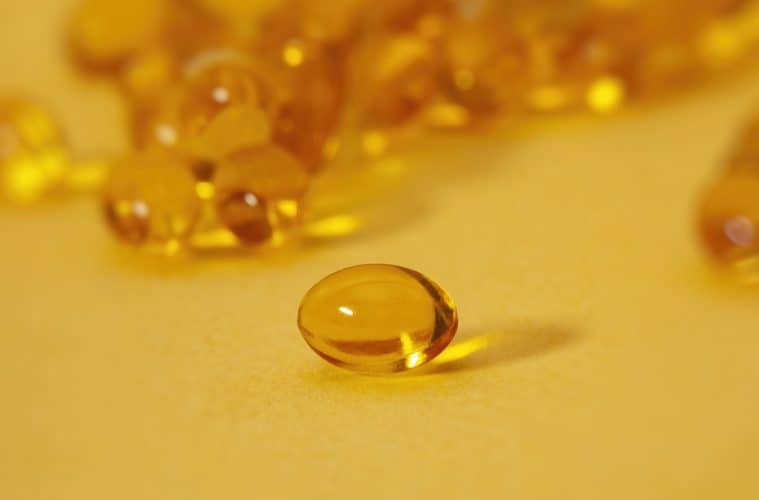Vitamin D: the ‘sunshine’ vitamin
In May last year, one of Britain’s leading scientists urged people to take vitamin D supplements, it was just the latest move by experts to increase the average intake of a vitamin which is increasingly connected to improved health outcomes.
Steve Jones, Professor of Genetics at University College London, told the Hay Literary Festival in Wales that the case for people taking vitamin D was now overwhelming.
‘I never thought I would be a person who would take vitamin supplements,’ he told his audience. ‘I always thought it was absolute nonsense, it’s homeopathy. I now take vitamin D every day. Today, because I knew the sun wasn’t going to shine, I took an extra one.’
Jones was backed up in August last year by a study that found that vitamin D should be put into flour to stave off any potential deficiency. According to academics at the University of Birmingham, free supplements of the ‘sunshine vitamin’ should also been offered to ‘risk groups’ like children, older people and black and ethnic minorities to stop more than three million further cases of deficiency.
Multiple studies have suggested a connection between low vitamin D levels and increased incidence and death from cancer, heart disease, high blood pressure, stroke, multiple sclerosis, diabetes etc.
Healthcare workers were unaware until recently of the consequences of vitamin D deficiency and its role in chronic disease. Many internationally recognised experts now accept, however, that vitamin D deficiency is a major risk factor in a long list of chronic diseases, such as incidence and death from cancer, heart disease, high blood pressure, stroke, multiple sclerosis and diabetes.
Why is there a deficiency?
The body produces vitamin D provided there is an adequate amount of UVB light from sun exposure, meaning that our intakes during the ‘darker’ months are typically negligible. Other factors, which limit this exposure include age, skin pigmentation, regular use of sunscreen and covering up of the skin for religious reasons.
Once vitamin D hits the skin, it is then transported to the liver after absorption where (in the form of calcidiol) it is stored for future use. Calcidiol (25-hydroxy D) is sent all over the body where different tissues (including the kidneys) convert it to activated vitamin D23 (calcitriol), which is needed for a healthy immune system.
What can increased vitamin D levels do for the body?
Immunity enhancement: Vitamin D has become incredibly popular due to its impactful ability to ward off colds and flu. A meta-analysis published in the British Medical Journal (BMJ) concluded that vitamin D was not only safe, but could also help to protect against respiratory tract infections – which covers everything from colds and flu to pneumonia.
Reduction in fall risk and bone fractures: Vitamin D can also assist with preventing falls.
As we age, accidental falls are less embarrassing and more threatening and, as such, are much more likely to lead to bone fractures and a hospital visit. Vitamin D, however, supports muscle function, consequently reducing the risk of falls in individuals, particularly the elderly.
Reduction in cardiovascular risk:
Vitamin D has been linked to the reduction of cardiovascular events by reducing the prevalence of co-morbid diseases, such as diabetes and blood pressure, reducing inflammation of the cardiovascular system and reducing the risk of arterial calcification (hardening of the arteries).
Reduction in sleep and pain problems:
A recent review study, which was published in the Journal of Endocrinology – ‘The interfaces between vitamin D, sleep and pain’ – demonstrated that low vitamin D levels were associated with both elevated pain and irregular sleep patterns. The study authors concluded that vitamin D supplementation had an important role to play in the therapeutic improvement of sleep, and in the prevention and treatment of chronic pain conditions.
What is the recommended dose of vitamin D?
This can be a difficult one to answer since the dosage is very much dependent on an individual’s existing vitamin D level and personal requirements. The government recommendation is that all individuals should consider taking at least 400iu in autumn and winter months per day. Experts are, however, now increasingly advising those up to age 70 should be taking 600iu, and those aged 71 and older 800iu per day.
Top foods for vitamin D
To get vitamin D from food, fatty fish such as tuna, mackerel and salmon is a good option. (Three ounces of cooked salmon has more than 450iu.) Other foods that provide vitamin D include: dairy products, orange juice, soy milk and cereals; beef liver; cheese and egg yolks.
In the event that a diet is lacking in the above foods, a wide range of supplements is readily available from pharmacies and health food stores. Unfortunately, vitamin D can be difficult for some patients to absorb. Being fat soluble, it is best absorbed in oil-containing formulas such as capsules, since these provide the dietary fats that assist in digestive absorption.



